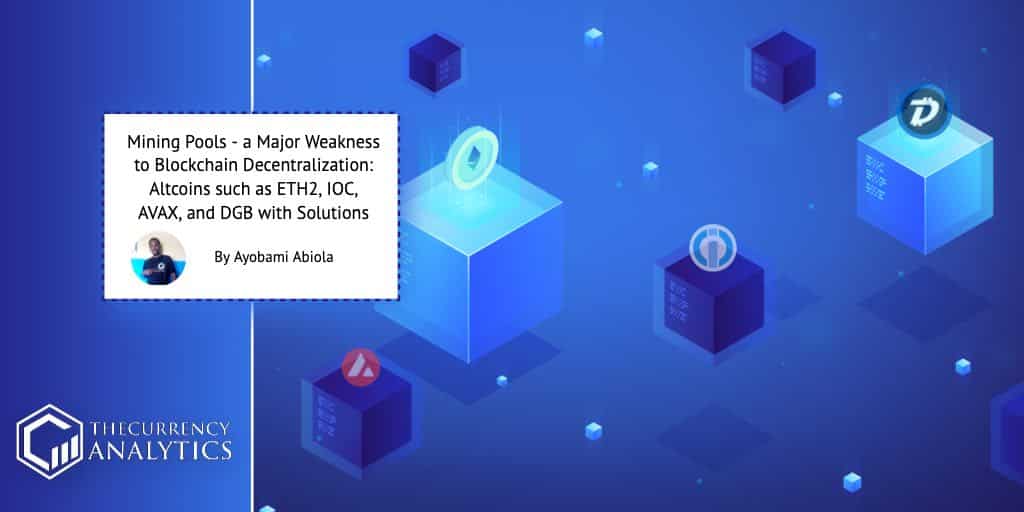
Bitcoin mining pools are a great way to assure miners of earnings as opposed to being a lone-miner trying to find blocks first to gain rewards once in a blue moon. Mining pools combine the mining power of many miners to improve the chances of finding the block first. Rewards are distributed to miners in a pool according to the successful assignments they have completed using different criteria. It also makes sure that miners are quite secured and are running updated versions of their clients.
The disadvantages, however, affect the core foundation of what decentralization stands for. Few big mining pools can centralize the decisions of a blockchain network such as bitcoin. Emin Gün Sirer, a professor at Cornell University and the founder of Avalanche, and Ittay Eyal, an Assistant Prof. at The Technion, made a revelation in 2013 on the fact that bitcoin is broken:
“Once a group of selfish miners appears on the horizon, rational miners will preferentially join that mining group to obtain a share of their higher revenues. And their revenues will increase with increasing group size. This creates a dynamic where the attackers can quickly acquire majority mining power, at which point the decentralized nature of the Bitcoin currency collapses, as the attackers get to control all transactions.”
This reveals that it becomes possible for huge mining cartels or pools with the most mining power in the network to take over the transactions. Recent metrics also revealed that more than 50% of Bitcoin’s hash power comes from just four of the largest pools. Ethereum, another Proof of Work coin, also experienced 51% of its hash rate controlled by two mining pools twice in history. This proves the fact that proof of work has a major challenge with super-powered mining pools.
Obviously, this is one major reason why Ethereum is considering a migration to the Proof of Work consensus algorithm. Joel Bosh, the founder of IOCoin stated in a discussion on telegram:
“We performed this critical move from POWX11 2 weeks into IOC mining period for a reason… remember our team started in 2014 all decisions are made with security in mind before anything else… we proved POS viability years ago that allowed for a bunch of these ICO’s to move in that direction…”
IOCoin made a migration fro Proof of Work consensus algorithm to Proof of Stake after two weeks of its launch because they have researched the major weakness in the former consensus.
Emin Gun Sirer who made the discovery in 2013 also went on to create Avalanche blockchain that operates Proof of Stake to incentivize it validators, and a mechanism to prevent Sybil attacks. The start-up made $42million in about 4hours after it started its public sale.
Digibyte in its own mining algorithm saw this grave revelation and mitigate the risks by running five mining algorithms that prevent miners with huge machines from gaining rewards on the network. Essentially, this gives lone miners an equal opportunity to mine and gain rewards.
According to different approaches to solving mining centralization, these solutions have been implemented by alternate cryptocurrencies:
It is possible for Bitcoin developers to reach a consensus on how big a mining pool should be. There should be an algorithm that prevents a mining pool from contributing a certain high hash rate which could lead to network take over. This limit will enforce a maximum mining pool size and allow miners to join other mining pools. This will eventually level the game and restore the decentralization. But will the large mining pool owners want their pool size and ultimately their rewards to reduce?
Get the latest Crypto & Blockchain News in your inbox.